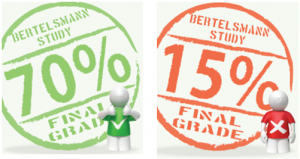I have spent two days at the IWBnet Masterclass conference in Brighton and have been challenged in my understanding of education. Keynote speaker Ian Jukes began yesterday speaking about the concept of disruptive innovation. In this digital age, exponential advances in technology have forced a change in the way we do everything. As educators, we must understand who we are teaching and what they are exposed to outside their life at school. In my short time at Joeys, I have seen a staff team that knows the boys well and are dedicated to their work.
The nature of the curriculum means our teaching must often be content based, as opposed to competence based. Our boys are far too often interested in being handed information, memorising it for an assessment task in the hope of a successful mark and moving on to the next task. Ian’s wife Nicki made reference to a study illustrating the stark difference between the two. Two groups of students were taught the same information. One group approached the topic using a concept and memory based approach; the other group focused on competency. the results were interesting. The assessment at the end of the unit yielded almost identical results. However, when retested one year later, the content based group had a recall of 15%, compared to a 60% recall of the competence group. By focusing on the content with little interest in thinking critically, our boys will remember fifteen percent of what we teach then, and that is assuming they understand and memorise all of the content now.
How does this impact us? When our students want to memorise a set of concepts of an assessment task, they are doing themselves a great injustice. This information suggests that a year later they will remember only a small portion of what they have learnt. The challenge for us to consider is how we can encourage our boys to be competent, developing skills in creativity and analysis rather than memory. The sheer amount of content and various time constraints means default he default mode is content based. It will take a great deal of maturity from the boys and initiative from staff to cause a shift in thinking. Yesterday, all at the conference were challenged to make a change of 15%. Fifteen percent of our teaching time devoted to competency based activities where students must actively participate in their learning, not just receiving information. Immediate, large scale changes are not realistic, but regular, incremental adjustments will hopefully have a significant impact.
Benjamin Peacock.

